#IB Internal Assessment
Explore tagged Tumblr posts
Text
IB Internal Assessment Help: Unlocking the Path to Academic Excellence
The International Baccalaureate (IB) Internal Assessment (IA) is a critical component of the IB Diploma Program, enabling students to showcase their skills through independent research and analysis within their chosen subjects. Unlike external exams, IAs are internally graded by teachers and externally moderated by the IB. These assessments test a student’s ability to conduct research, analyze…
#achieving top IA grades.#Biology IA#data analysis in IAs#Economics IA#History IA#IA feedback#IA help#IA project management#IA structure#IB coursework#IB IA criteria#IB IA guidance#IB IA success stories#IB IA topics#IB Internal Assessment#Internal Assessment tips#Mathematics IA#online IA tutoring#professional IA help#Research question development
0 notes
Text
IB Internal Assessment Help: Unlocking the Path to Academic Excellence
The International Baccalaureate (IB) Internal Assessment (IA) is a critical component of the IB Diploma Program, enabling students to showcase their skills through independent research and analysis within their chosen subjects. Unlike external exams, IAs are internally graded by teachers and externally moderated by the IB. These assessments test a student’s ability to conduct research, analyze…
#achieving top IA grades.#Biology IA#data analysis in IAs#Economics IA#History IA#IA feedback#IA help#IA project management#IA structure#IB coursework#IB IA criteria#IB IA guidance#IB IA success stories#IB IA topics#IB Internal Assessment#Internal Assessment tips#Mathematics IA#online IA tutoring#professional IA help#Research question development
0 notes
Text
Daniel's Educational Services| Expert Assistance for IB Internal Assessment
Daniel's Educational Services provides comprehensive support for IB Internal Assessment, focusing on guidance and practical assistance. Their experienced educators provide personalized attention, tailored strategies, and guidance on selecting appropriate topics and refining research methodologies for student success.

0 notes
Text
I did my math IA last year and had a lot of fun with doing stats, so here are some other relationships you could have fun analyzing:
Kudos to Hits (AO3)
Average run time of a “principle” actor in a film (should probably be narrowed down to one specific actor or one specific director)
Word count of a specific word in a text
How the number of instruments in a song might affect its popularity (of one specific artist)
I’d suggest doing an ANOVA test for an IA, not necessarily these examples, I did and it was a lot of fun. Albeit, I did have to teach it to myself, but still. I got all geeky and analyzed how and if different actors playing the Doctor and different executive producers affected the rating of the show, and which was most significant. At the end, my data concluded that there was no significant difference between the two but that they were both very affective, but it’s the study and procedure IB is looking at.
#ib diploma#ib#my post#international baccalaureate#ibdp student#ibdp#ib math#stats#statistics#math#math ia#ib ia#internal assessment#calculus
14 notes
·
View notes
Text
i am an academic weapon (DONT DO THE IB PROGRAM. DONT DO IB. DO NOT DO IT. DONT.)
6 notes
·
View notes
Text
I'm officially screwed with writing my Biology IA purposal. Cuz I have nooooo idea what I'm gonna do for it.
Don't procasinate like me guys 🤞🏼🤞🏼🤞🏼🥰
2 notes
·
View notes
Text
Anyone understand the Wilcoxon Signed Rank test. How do I do this by hand I'm a tad confused.
#we're allowed to use online calculators but they Don't make sense. like the results? not something I can analyze because what does it mean#so I'm doing it by hand#I feel like our data is wrong?#idk hopefully not. too late now to get new data aha#ib#ibdp#ia#internal assessment#international baccalaureate#wilcoxon#wilcoxon signed rank test#data analysis
1 note
·
View note
Text
Space Shuttle, Phase B: Grumman Design 518
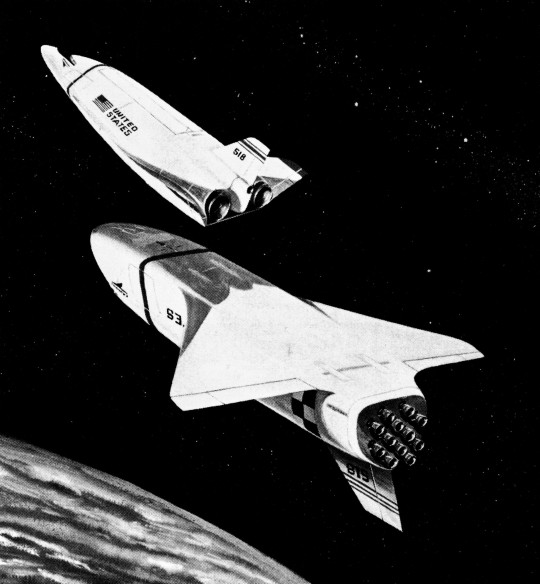
Information from Grumman's submitted application on their design:
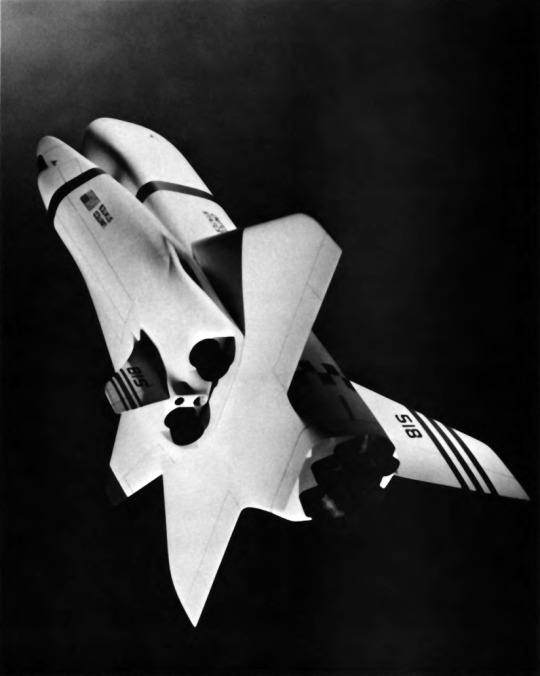
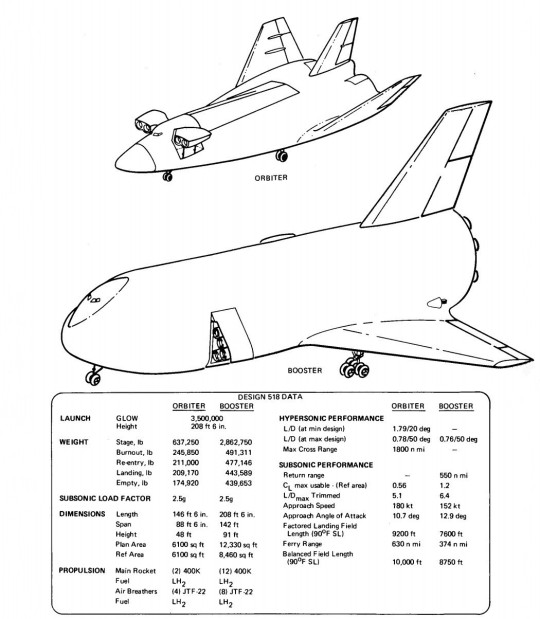
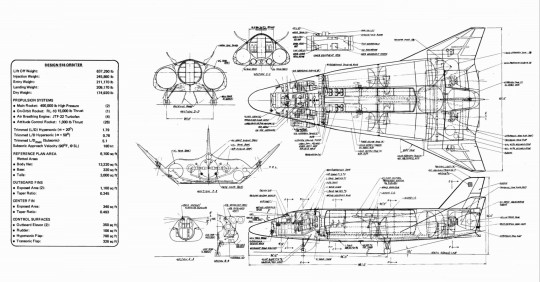
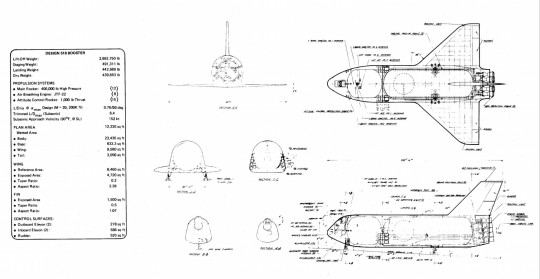
"Design 518 is a fully responsive and balanced reusable, two-stage design based on the prescribed 3.5 million lb gross lift-off weight (GLOW). The aerodynamic configuration of the orbiter was. derived from an investigation of straight, swept delta, and lifting body configurations. The selec ted lifting body appears competitive in all respects (weight, flying qualities, elastic characteristics) and provides the potential for straightforward evolution to high crossrange reentry as thermal protection systems become qualified. Evaluation of a single aerodynamic configuration will provide a clear cut understanding of the weight, performance, and cost penalties associated with increased cross range. In the low cross-range mode, results to date show that the 3.5 million lb GLOW limits the fully internal payload to 32,200 lb. The Design 518 orbiter represents a near optimum balance between size of vehicle, size of payload, and propulsion capa bility (AV) apportionment.
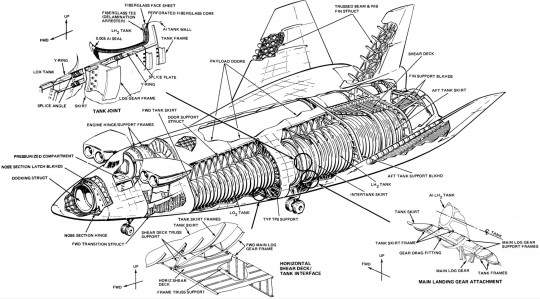


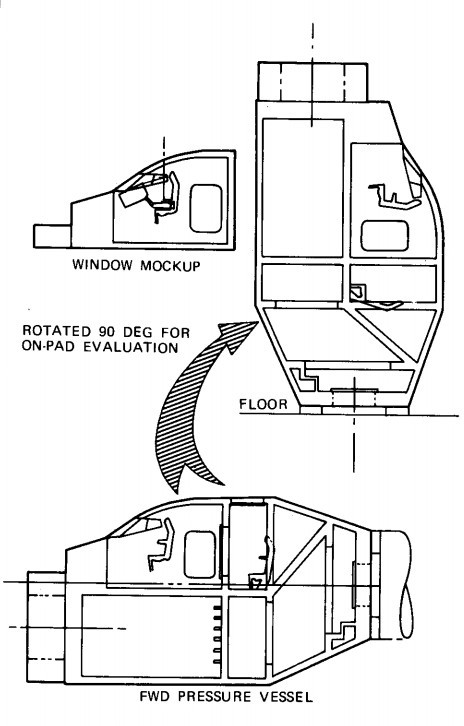
The Design 518 booster is a weight conscious, conservatively designed delta-wing configuration which includes the prescribed 400,000 lb thrust high-pressure rocket engines. A refinement which demands investigation is the application of larger, 1,000,000 Ib thrust high-pressure engines. Preliminary design. will be performed on Design 518, as described in Section 1 of this proposal. An acquisition plan will be created which will include the 400,000 lb thrust high-pressure engines and other characteristics decribed in the Statement of Work and its appendices. The program cost will be assessed for the IOC of late 1977. Grumman and its associates will pursue all of the objectives and requirements of the RFP for Design 518. In summary, Design 518 demonstrates that an attractive and promising responsive design can be achieved within the 3.5 million lb GLOW. With refinement, which can be expected during the Phase B study, we believe that improved payload capability can be obtained while continuing to observe the weight margin rules called for by the RFP."
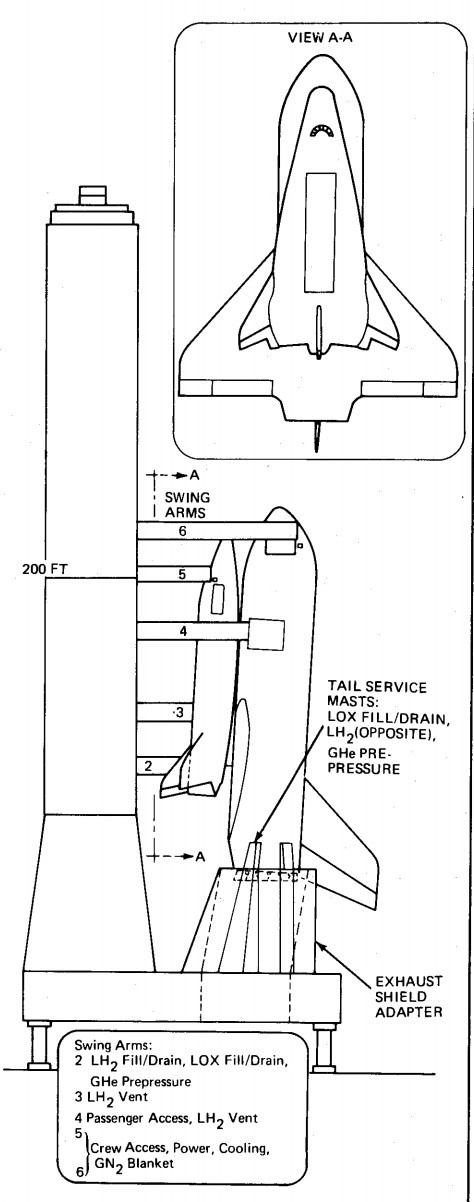
Artwork by Thomas Becker, 1972: link
#Space Shuttle#Orbiter#NASA#Space Shuttle Program#Space Shuttle Development#1972#Space Shuttle Phase B#Phase B#Grumman#Grumman Design 518#Design 518#my post
89 notes
·
View notes
Text
18 Things to know about International Curriculum School
An international curriculum school is an educational framework designed to offer standardized mastering stories throughout nations and cultures. It frequently emphasizes international views, move-cultural knowledge, and prepares students to satisfy the demanding situations of a swiftly globalizing global. International curricula are regularly used by global colleges or faculties that intention to provide students with a global schooling. In this newsletter, we are able to discover the important thing features, kinds, advantages, and challenges of an global curriculum.


What is an International Curriculum?
An worldwide curriculum is a versatile framework designed to meet the desires of students from diverse cultural and linguistic backgrounds. Unlike countrywide curriculums, which can be frequently designed to fulfill the instructional standards of a particular us of a, an international curriculum is dependent to transcend countrywide boundaries, supplying students with an education this is globally applicable and competitive.
International curricula often recognition on key capabilities and abilities like crucial wondering, creativity, verbal exchange, and collaboration. They emphasize inquiry-primarily based gaining knowledge of, in which college students are recommended to ask questions, explore ideas, and apply their expertise to actual-global problems. Additionally, they prioritize international views, encouraging college students to understand and respect numerous cultures, histories, and viewpoints.
Types
There are several across the world diagnosed curricula which can be implemented in faculties worldwide. Some of the most famous include:
International Baccalaureate (IB)
The International Baccalaureate (IB) is one of the maximum extensively recognized worldwide curricula. It is a rigorous, academically challenging program that specializes in growing college students who are inquiring, informed, and worrying. The IB offers programs for college students aged 3 to 19, inclusive of:
Primary Years Programme (PYP) for college kids aged 3 to twelve
Middle Years Programme (MYP) for students elderly eleven to 16
Diploma Programme (DP) for college students elderly sixteen to 19
The IB is thought for its holistic technique, where college students no longer best cognizance on educational success however additionally on non-public improvement, social duty, and global-mindedness.
Cambridge International Examinations (CIE)
The Cambridge International Examinations (CIE) curriculum is every other highly respected worldwide curriculum, used in over one hundred sixty international locations. The CIE curriculum gives a extensive range of topics and specializes in growing critical questioning, hassle-fixing, and studies talents. Students following this curriculum can take a seat for across the world recognized tests including the Cambridge IGCSE (International General Certificate of Secondary Education) and A-Level qualifications, which can be widely customary through universities around the arena.
Ed excel
Ed excel is a UK-primarily based curriculum that gives each primary and secondary training with a focal point on growing realistic talents and academic know-how. The Ed excel curriculum is used globally and gives a huge range of qualifications, inclusive of IGCSEs and A-Levels. Ed excel is specially acknowledged for its vocational training and education packages, which help college students develop enterprise-unique capabilities that can put together them for the workforce.
American Curriculum
The American curriculum is widely adopted by using international faculties, particularly in nations in which there's a huge expatriate population. The American curriculum usually follows a standards-based approach, with a focus on growing literacy, numeracy, and vital wondering abilities. Students following this curriculum typically take Advanced Placement (AP) assessments, which can be diagnosed by using universities global for college credit and placement.
International Primary Curriculum (IPC)
The International Primary Curriculum (IPC) is a thematic, creative curriculum for number one-elderly college students. It specializes in the improvement of talents, understanding, and knowledge in subjects which includes technological know-how, records, geography, and the arts. The IPC is designed to be bendy and adaptable, permitting schools to integrate their national standards at the same time as offering students with a worldwide attitude.
Key Features
While each international curriculum has its unique method, there are numerous common capabilities that define global education:
Global Perspective
One of the primary desires of an worldwide curriculum is to offer college students with a global outlook. This approach assisting college students recognize special cultures, traditions, and viewpoints even as developing empathy and admire for variety. Students are encouraged to suppose past their immediately environment and don't forget issues and demanding situations that affect the world as an entire.
Inquiry-Based Learning
International curricula regularly emphasize inquiry-primarily based mastering, wherein students take an lively role in their schooling by means of asking questions, conducting research, and exploring topics in depth. This technique fosters crucial wondering, hassle-solving, and impartial getting to know, preparing college students to come to be lifelong learners.
Emphasis on Skills and Competencies
In addition to educational information, global curricula location a sturdy emphasis on growing 21st-century talents which includes creativity, collaboration, verbal exchange, and virtual literacy. These skills are critical for success within the current global, where speedy technological improvements and globalization are converting the nature of work and society.
Multilingualism
Many worldwide curricula promote multilingualism, encouraging college students to become gifted in a couple of language. This no longer most effective enhances cognitive improvement but additionally allows students talk and collaborate with people from special linguistic and cultural backgrounds.
Holistic Development
An international curriculum often takes a holistic method to training, focusing on the general development of the pupil. In addition to instructional achievement, students are encouraged to develop their emotional intelligence, social competencies, and experience of duty toward their network and the environment.
Benefits
Prepares Students for a Globalized World
An worldwide curriculum prepares college students to thrive in a globalized world through developing their knowledge of various cultures and views. This helps students turn out to be more open-minded, adaptable, and able to operating in various environments.
Widely Recognized Qualifications
Students who follow an worldwide curriculum and take standardized checks like the IB Diploma, Cambridge IGCSE, or Edexcel A-Levels have qualifications which might be diagnosed and respected with the aid of universities and employers worldwide. This opens up a extensive range of opportunities for higher education and profession development.
Focus on Critical Thinking and Problem Solving
International curricula emphasize the improvement of vital thinking, creativity, and problem-solving abilities, which might be critical for success in both instructional and professional settings. These abilities help students emerge as impartial thinkers and revolutionary problem solvers.
Cultural Awareness and Empathy
By gaining knowledge of about distinctive cultures, histories, and international challenges, students develop cultural recognition and empathy. This allows them build meaningful relationships with people from various backgrounds and come to be responsible global residents.
Challenges of an International Curriculum
Cost of International Education
One of the number one demanding situations of an international curriculum is the price. International colleges that provide these curricula often fee excessive training fees, making them inaccessible to many students.
Adapting to Different Learning Environments
Students who circulate regularly because of their dad and mom' jobs or different reasons may additionally face demanding situations in adapting to exceptional worldwide curricula in diverse schools. While global curricula goal to offer consistency, there can be differences in teaching patterns, resources, and school environments.
Balancing Local and Global Perspectives
While international curriculum portal emphasize international views, they will no longer usually offer enough awareness on local records, subculture, and issues. Schools want to find a stability between imparting a international schooling and preserving a connection to the students' home nations and cultures.
2 notes
·
View notes
Text
(Still) going to the gym ¹
Going to the gym is a long-term activity I have been pursuing for more than two years now. In this blog, I will reflect on my progress since the first time I turned in going to the gym as my CAS activity.
🏋🏼♀️Activity title: Training at the gym
🏋🏼♀️Duration: 5 hours per week
🏋🏼♀️Type of activity: Action
🏋🏼♀️Location *currently*: Gym Cartel


Activity description
In the last few months, I have changed several gyms and my gym habits around them. The most progress has been noticeable in the last month since I started going to the new gym Cartel. I am mainly focused on getting back in shape for the upcoming week of arts in March because it is a significant event and it takes a lot of strength and endurance. For this reason, I have been attending the gym every two days and I spend around an hour and a half each time. I am doing various types of exercises which are focused on cardio and strength increase.
Learning outcomes
🏋🏼♀️Demonstrate how to initiate and plan a CAS experience.
🏋🏼♀️ Identify your own strengths and develop areas for personal growth.
🏋🏼♀️Show commitment to and perseverance in CAS experience.

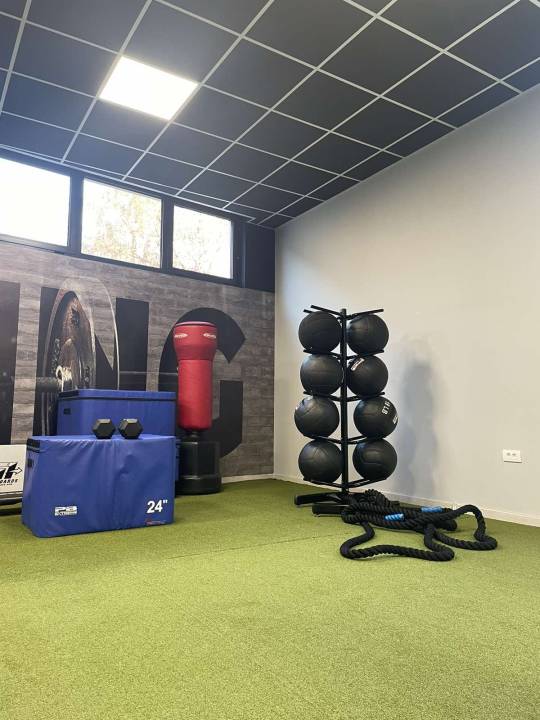
Reflection
Going to the gym has definitely helped me to form healthier habits and be more organized. It requires a solid amount of time management to keep up with IB obligations and other aspects of everyday life. It helps me with my mental health as well because the last few months of IB have been extremely stressful and full of internal assessments. By going to the gym I have managed to lower stress levels and improve my physical health and the best part is seeing the progress, feeling more strong and confident, and more prepared for dancing on the week of arts in my school. Going to the gym became a really important part of my daily routine and I am proud of that.
¹Vanja Gojić, CAS blog
8 notes
·
View notes
Text
Affordable IB Tutoring: Unlocking Academic Success Without Breaking the Bank
Affordable IB tutoring is a practical solution for students who want to excel in the rigorous IB Diploma Program. The International Baccalaureate (IB) Diploma Program is widely regarded for its academic rigor and holistic approach to education. However, its demanding coursework, intricate Internal Assessments (IAs), and comprehensive IB exams often leave students seeking additional support. While…
#affordable IB exam preparation#Affordable IB Tutoring#affordable tutoring for IB#Best IB Tutors#budget-friendly IB tutoring#cost-effective IB tutoring#IB Biology tutoring#IB EE support#IB exam strategies#IB IA guidance#IB Internal Assessments#IB Mathematics HL help#IB online learning#IB past papers#IB personalized tutoring#IB study tips#IB Tutoring Services#online IB tutors#TOK tutoring
0 notes
Text
Affordable IB Tutoring: Unlocking Academic Success Without Breaking the Bank
Affordable IB tutoring is a practical solution for students who want to excel in the rigorous IB Diploma Program. The International Baccalaureate (IB) Diploma Program is widely regarded for its academic rigor and holistic approach to education. However, its demanding coursework, intricate Internal Assessments (IAs), and comprehensive IB exams often leave students seeking additional support. While…
#affordable IB exam preparation#Affordable IB Tutoring#affordable tutoring for IB#Best IB Tutors#budget-friendly IB tutoring#cost-effective IB tutoring#IB Biology tutoring#IB EE support#IB exam strategies#IB IA guidance#IB Internal Assessments#IB Mathematics HL help#IB online learning#IB past papers#IB personalized tutoring#IB study tips#IB Tutoring Services#online IB tutors#TOK tutoring
0 notes
Text
FL banned AP Psych because College Board refused to change their curriculum to accommodate the “Don’t Say Gay” law (ie taking out sections teaching about gender and sexuality)
And now two other providers of educational material/college-level exams, International Baccalaureate and Cambridge Assessment/AICE, have signed agreements saying that their curriculum will now align with the “Don’t Say Gay” law. This will cause history surrounding chattel slavery, the Civil War, and Reconstruction to be majorly distorted and for gender/sexuality lessons to be completely removed.
Check out the link from Color of Change to send a letter to IB And Cambridge to stop whitewashing and erasing queer folks from their curriculum.
#don’t say gay#florida#cambridge#international baccalaureate#IB#AICE#queer history#black history#whitewashing#queer-erasure#petition#Cambridge was honestly probably one of the only reasons that I was taught any truthful Black and queer history during high school in FL#i hate that other kids wouldn’t have the opportunity to have this foundation
13 notes
·
View notes
Text
Achieving Global Safety Excellence: The NEBOSH International Diploma
Article:
In today's globalized world, the importance of workplace health and safety cannot be overstated. Organizations operating across borders face unique challenges in ensuring the well-being of their workforce. The NEBOSH International Diploma has emerged as a leading qualification for health and safety professionals, equipping them with the knowledge and skills to manage risks and promote a culture of safety in diverse working environments.
Understanding the NEBOSH International Diploma
The NEBOSH National Examination Board in Occupational Safety and Health International Diploma is a prestigious and comprehensive qualification designed for individuals pursuing a career in health and safety management. Recognized globally, it provides an in-depth understanding of occupational health and safety principles, enabling professionals to implement effective safety management systems in various industries.
Why Choose the NEBOSH International Diploma?
1. Global Recognition
The NEBOSH International Diploma is acknowledged worldwide, making it an ideal qualification for those aiming to work in multinational companies or different countries. Employers value the diploma as it demonstrates a high level of competence and commitment to health and safety.
2. Comprehensive Curriculum
The diploma covers a wide range of topics, including hazard management, risk assessment, incident investigation, and health and safety law. It ensures that graduates have a thorough understanding of the theoretical and practical aspects of occupational health and safety.
3. Career Advancement
Holding a NEBOSH International Diploma can significantly enhance career prospects. Many graduates progress to senior health and safety roles, such as Health and Safety Manager, Consultant, or Advisor. The qualification also paves the way for further academic pursuits, such as a Master's degree in occupational health and safety.
4. Flexibility in Learning
NEBOSH offers flexible learning options, including classroom-based courses, online learning, and blended learning approaches. This flexibility allows professionals to balance their studies with work commitments.
Course Structure and Assessment
The NEBOSH International Diploma is divided into four units:
Unit IA: International Management of Health and Safety
Unit IB: International Control of Hazardous Agents in the Workplace
Unit IC: International Workplace and Work Equipment Safety
Unit DNI: International Application of Health and Safety Theory and Practice
Assessment is through written examinations for Units IA, IB, and IC, and a workplace-based assignment for Unit DNI. The rigorous assessment process ensures that only those with a comprehensive understanding of health and safety principles achieve the diploma.
Real-World Impact
Professionals with a NEBOSH International Diploma play a critical role in reducing workplace accidents and illnesses. They are equipped to identify potential hazards, implement effective control measures, and foster a safety-conscious culture within their organizations. This not only protects employees but also enhances organizational reputation and compliance with international safety standards.
Conclusion
The NEBOSH Courses is a gateway to a successful career in health and safety. Its global recognition, comprehensive curriculum, and flexibility make it an excellent choice for professionals dedicated to making workplaces safer and healthier. As industries continue to prioritize the well-being of their workforce, the demand for qualified health and safety professionals with a NEBOSH International Diploma will undoubtedly rise, ensuring a safer future for all.
#NEBOSH#International Diploma#Occupational Health and Safety#Workplace Safety#Health and Safety Management#Global Safety Standards#Risk Assessment#Career Advancement in Safety#Health and Safety Qualification#Safety Training and Education
2 notes
·
View notes
Text

#onthisday in 1943 Supermarine Seafires were tasked with protecting the fleet during the Allied invasion of Italy at Salerno, known as Operation Avalanche.
@classicsarbirds via X
Supermarine Seafire | Classic Warbirds
The idea for a naval version of the Supermarine Spitfire originated during 1938, but it wouldn't be until November the following year when a Spitfire was tested to assess whether the type could be used aboard an aircraft carrier. However the need for Spitfires within the Royal Air Force led to the Fleet Air Arm ordering the Fairey Fulmar as their new fighter to compliment the Blackburn Roc and Gloster Sea Gladiator. The Fleet Air Arm were desperate for more modern aircraft as the ones currently in service were no match against the modern Japanese and German aircraft, and after the Spitfire excelled during the Battle of Britain (10th July 1940 - 31st October 1940) the Admiralty would again show interest in the aircraft for use aboard its carriers, and again it would have to wait. However they were able to secure the use of a navalised Hawker Hurricane known as the Sea Hurricane.
Eventually in October 1941 permission for a Sea Spitfire was granted, with the first prototype flying on the 7th January 1942. Three days later on the 10th January 1942 it performed its first deck landing when it touched down on HMS Illustrious (87). Although the modified Spitfire made a number of deck landings, take-offs and catapult launches these were done under favourable conditions, therefore, providing little warning of the problems the Seafire would encounter in operational conditions. Forty eight Spitfire Mk Vs would be converted to Seafire Mk IBs with the first one flying on the 23rd March 1942 and entering service on the 15th June 1942 when No. 807 Naval Air Squadron received the first examples. Powered by the 1,470-hp Rolls-Royce Merlin 45 the top speed of the aircraft was 365 mph with a range of 460 miles and a service ceiling of 36,900 ft. Armament was two 20mm cannons and four 0.303-in machine-guns.
Converting the Spitfire required an arrestor hook, catapult spools and slinging lugs, which were reinforced, on both sides of the fuselage, as well as naval avionics to be added. It would be Air Service Training at Hamble who would convert a number of Spitfires whilst Supermarine modified a number on the production line and brand new Seafires were built by Cunliffe-Owen Aircraft. The major hindrance for the Seafire was the fact that during its development the Spitfire was never considered to be used aboard an aircraft carrier. Two of the major issues with the type were its poor forward view and inability to carry more fuel internally.

The Seafire Mk IIC was built as a naval aircraft from the very start and on the 23rd May 1942 the first production aircraft flew. The Seafire Mk IIC was powered by the 1,645-hp Rolls-Royce Merlin 32 engine which gave the aircraft a top speed of 342 mph, range of 460 miles with a service ceiling of 37,500 ft. Alongside its armament of four 0.303-in machine-guns and two 20mm cannons it could carry one 500lb or two 250lb bombs. The first Seafire Mk IICs entered service during June 1942 with No. 807 Naval Air Squadron and these along with Seafires which No. 801 Naval Air Squadron received in September 1942 would serve aboard HMS Furious (47) until February 1943. During this time they participated in the Allied invasion of North Africa, known as Operation Torch, which began on the 8th November 1942. A total of five Seafire squadrons would be used, destroying a total of nine Vichy France aircraft, five in the air and four on the ground. One Seafire Mk IIC would be sent to the United States for tests at the Naval Airtest Centre.
Seafire operations continued and the following September they were tasked with protecting the fleet during the Allied invasion of Italy at Salerno, known as Operation Avalanche on the 9th September 1943. Although forty four were lost, just two were a result of combat. Most had suffered accidents, so many in fact that they had exhausted the spare propellers stock aboard HMS Hunter (D80), the only action available was to cut six inches off each blade of the damaged propeller. This was to become standard practice as it proved an effective remedy. Despite its problems the Seafire would be the fastest fighter afloat during a ten month period from October 1942 until August 1943 when the A6M5 Zero and F6F-3 Hellcat started to enter service.

A modified Seafire Mk IIC provided the basis for the Seafire Mk III prototype which made its maiden flight on the 9th November 1942 with the Fleet Air Arm receiving their first example on the 8th June 1943 and when they entered service on the 27th November 1943 with No. 894 Naval Air Squadron they would be the first Seafires to have manually folding wings with two folds, one before the armament and the other allowing the wingtip to fold downwards, the Seafire Mk III made handling of the aircraft much easier and it could be transported using carrier lifts. Powered by the 1,585-hp Rolls-Royce Merlin 55M engine top speed of the Seafire Mk III was 352 mph, range 465 miles with the lowest service ceiling of all the Seafire variants of 33,800 ft. Armament was identical to the Seafire Mk II.

The Seafire Mk III played a role in Operation Overlord, more commonly known as D-Day, on the 6th June 1944 and was involved in the invasion of Southern France, Operation Dragoon, on the 15th August 1944 and eight Seafire Mk IIIs would take part, on the 15th August 1945, in one of the last dogfights of the Second World War (1939 – 1945) when twelve Japanese aircraft, four Mitsubishi J2M Raidens and eight A6M Zeros came up against Nos. 887 and 894 Naval Air Squadrons who lost a single Seafire but shot down seven Zeros in the battle above Tokyo Bay, Japan.
The 31st August 1943 saw the Air Ministry issue Specification N.4/43 for six Seafires, three prototypes and three pre-production aircraft to be powered by the Rolls-Royce Griffon engine, this was a natural change to match the engine change with the Spitfire, which led to the Seafire Mk XV. Fitted with the 1,850-hp Rolls-Royce Griffon VI engine its top speed was 369 mph, range 524 miles with a service ceiling of 34,600 ft. Armament was four 0.303-in machine-guns, two 20mm cannons and either a 500lb bomb or two 250lb bombs. The Seafire Mk XV also had a new 'sting' type arrestor hook. These entered service during May 1945 with No. 802 Naval Air Squadron at RNAS Arbroath.

Development of the type continued and the Seafire Mk XVII featured a clear-view bubble canopy and an increase in fuel capacity, however this would not see service during the Second World War. Powered by the 1,950-hp Rolls-Royce Griffon VI engine the aircraft had a top speed of 373 mph, range of 697 miles and a service ceiling of 34,600 ft. Armament was the same as the Seafire Mk XV but instead of the one 500lb bomb or two 250lb bombs, eight 60lb rocket projectiles could be carried.
Next in the Seafire lineage was the 2,035-hp Rolls-Royce Griffon 61 engined Seafire Mk 45. This had a top speed of 450 mph, range of 400 miles and a service ceiling of 42,400 ft. Armament was four 20mm cannons with a bomb load of one 500lb and two 250lb bombs. As the Seafire Mk 45 would not equip front line squadrons they lacked the folding wings from previous variants. This was followed by the Seafire Mk 46 which was powered by the 2,300-hp Rolls-Royce Griffon 87 engine and had contra-rotating propellers. Its top speed was 435 mph, range 435 miles with a service ceiling of 41,000 ft. Armament consisted of four 20mm cannons and either one 500lb bomb or eight 3-in rocket projectiles.
The Seafire Mk 47 would be the last variant and the first to feature wing folding which was power operated. Flying for the first time on the 25th April 1946. Powered by the 2,350-hp Rolls-Royce Griffon 87 engine it had a top speed of 452 mph, range of 405 miles with a service ceiling of 43,100 ft. Armament was four 20mm cannons with either three 500lb bombs or eight 100lb rocket projectiles. No. 804 Naval Air Squadron were the first to be equipped with the aircraft when they took delivery of thirteen during January 1948.
The Seafire F. Mk 47 would see action during the Korean War (1950 – 1953) with No. 800 Naval Air Squadron who operated from HMS Triumph (R16). They were involved in their first action on the 3rd July 1950 and would spend nearly three months on operations until the 25th September 1950, during this period they flew 360 sorties. When the squadron returned to Britain they received the Supermarine Attacker to replace their Seafire F. Mk 47s in 1951, the Seafires front line service was over. The Seafire was eventually retired from Fleet Air Arm service when No. 764 Naval Air Squadron was disbanded on the 23rd November 1954.
The type would also serve with the Royal Canadian Navy and French Aeronavale and a total of 2,580 would be built by the time the last Seafire rolled of the production line, a Seafire Mk 47, on the 28th January 1949.
Technical Details
Click on the aircraft image to view a larger version.
Top Speed Range Service Ceiling Armament
Seafire Mk I 365 mph 460 miles 36,900 ft four 0.303-in machine-guns
two 20mm cannons
Seafire Mk II 342 mph 460 miles 37,500 ft four 0.303-in machine-guns
two 20mm cannons
and either one 500lb bomb or
two 250lb bombs
Seafire Mk III 352 mph 465 miles 33,800 ft four 0.303-in machine-guns
two 20mm cannons
and either one 500lb bomb or
two 250lb bombs
Seafire Mk XV 369 mph 524 miles 34,600 ft four 0.303-in machine-guns
two 20mm cannons
and either one 500lb bomb or
two 250lb bombs
Seafire Mk XVII 373 mph 697 miles 34,600 ft four 0.303-in machine-guns
two 20mm cannons
and either one 500lb bomb,
two 250lb bombs
or eight 60lb rocket projectiles
Seafire Mk XVII side profile image
Seafire Mk 45 450 mph 400 miles 42,400 ft four 20mm cannons
one 500lb and two 250lb bombs
Seafire Mk 46 435 mph 435 miles 41,000 ft four 20mm cannons
and either one 500lb bomb or
eight 3-in rocket projectiles
Seafire Mk 47 452 mph 405 miles 43,100 ft four 20mm cannons
and either three 500lb bombs or
eight 100lb rocket projectiles
youtube
9 notes
·
View notes
Note
Hello Latte ! :) I am currently a student in ICSE and will be switching to IB next year. But the problem is I'm quiet literally unaware of most things about this curriculum. I know about TOK , EE and CAS and other general stuff. I was curious as to how the exams are conducted and how are they graded. I am having trouble understanding how my marks will get converted into points 1 to 7. Could you help me out ?
Hello! So the exams are still out of a lot of marks. Teachers are supposed to show you criteria to get a desired grade for each subject. The grades (1 to 7) depends on the percentage. Say for example, a test is out of 25 marks. If you get over a certain percentage ex: 55%, then you get a 5. (I'm using an example from some of my business tests)
Getting a 5 is easy if you put in a regular amount of work, but getting a 6 and a 7 is pretty hard and only gets harder since you have the entire syllabus to cover. Especially if you have subjects which give you essay questions on the test, because then a 7 depends on the quality of your essay.
I'm not sure if you know about the Internal Assessments so I'll just mention them here. IAs do contribute to the overall grade in the subject (most IAs are 20% of the final grade). My only advice for those is: don't procrastinate on those, get it done on time. Each subject also has at least 2 papers, sometimes 3 papers. Languages will have 4 (Reading, writing, speaking, listening). These papers also contribute a certain percentage to your final IB score.
As for how the exams are conducted, I think that depends on how your school decides to conduct it. But it will be rigid. A lot of people in my school focused on their DP year 1 exams because those are the grades many people apply to uni with (they're only the predicted grades, not the final).
Good luck for the IB and good on you that you did your research! It's the world's toughest high school programme for a reason :')
6 notes
·
View notes